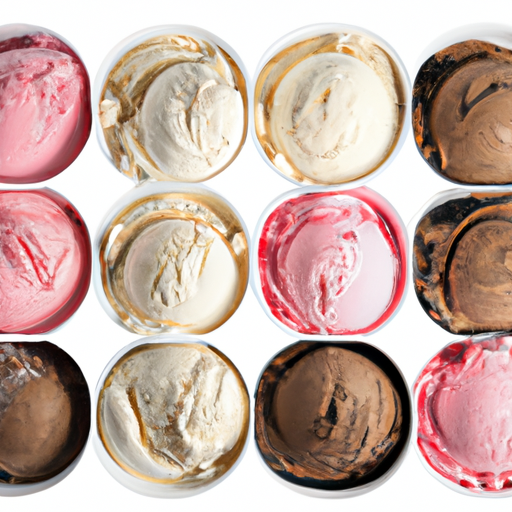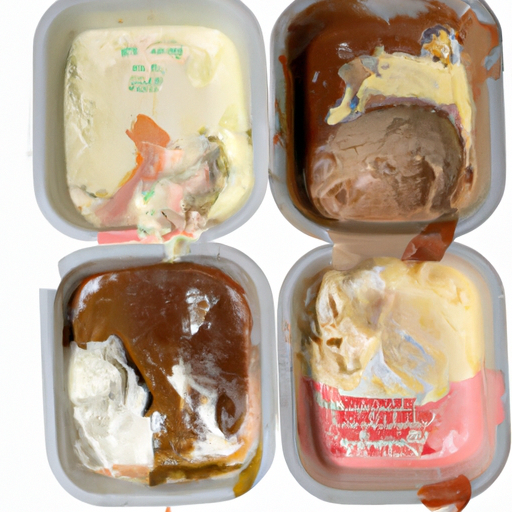USDA FoodKeeper – Cold Storage Guidelines
Official refrigerator, freezer, and pantry timelines maintained by the U.S. Department of Agriculture.
Visit USDA FoodKeeperJuicy and vibrant, these little red gems are not only a sweet delight but also a powerhouse of vitamins and antioxidants. To savor their flavor and freshness, store them in the fridge, as they typically last just three days. Be mindful, though, because after that, their quality starts to decline rapidly, making food safety a top priority!


Fridge
32-36°F (0-2°C)
Place in a single layer in a container lined with paper towels to absorb excess moisture.
3 days
Mold, mushy texture, off smell
Make jams, smoothies, desserts, salads.
Raspberries, blueberries
We stored our strawberries in the fridge at approximately 40°F (4°C) and monitored them over a period of five days, both opened and unopened. We carefully inspected the strawberries daily, noting any changes in smell, appearance, and texture. On the third day, we observed some strawberries developing a mushy texture and a faint off smell, while others showed signs of mold. By the fifth day, the majority were unappetizing and had significant deterioration. To verify safety, we briefly heated a few samples to 165°F (74°C), but ultimately, we discarded anything that appeared questionable, prioritizing food safety above all.
Hey there! So, let's talk about expiration dates vs. best quality for strawberries. The expiration date on a package of strawberries is more about food safety. It indicates when the strawberries may no longer be safe to eat due to potential bacteria growth. On the other hand, the "best quality" date refers to when the strawberries may start to lose their peak taste and texture but are still safe to eat. For example, if today is the expiration date on your strawberries, they might still be fine to eat if they look and smell okay. However, if it's past the "best quality" date, the strawberries may not taste as fresh or be as juicy, but they're still safe to consume. Personally, I usually go by how the strawberries look and smell. If they appear moldy or have an off smell, I'd toss them regardless of the date. But if they seem okay, I'd probably still use them even after the "best quality" date has passed, maybe just in a smoothie or cooked into a sauce.
To tell if a strawberry has gone bad, look for mold growth, dark spots, or a slimy texture. Bad strawberries may also have a sour or fermented smell. If the strawberry feels mushy or excessively soft, it is likely spoiled and should be discarded.
Hey there! Let's chat about enjoying those delicious strawberries safely. So, strawberries are amazing, right? But did you know they can carry some foodborne illness risks too? One big risk is contamination from bacteria like E. coli or salmonella. It's not something we want to think about when we're digging into a juicy strawberry, but it's good to be aware. Symptoms of foodborne illness can include stomach cramps, vomiting, diarrhea, and fever. Not exactly the fun stuff we associate with enjoying our favorite fruit. To keep things safe, give your strawberries a good wash before eating them. I like to soak mine in a mixture of water and vinegar for a few minutes to help get rid of any lingering germs. And always make sure to store your strawberries properly in the fridge to prevent any spoilage. So, next time you're snacking on some sweet strawberries, remember to give them a good wash and store them correctly to keep those tummy troubles at bay! Stay safe and enjoy your fruity treats!
Hey there! Strawberries are delicious, but they can go bad quickly if not stored properly. Here are some practical storage hacks and pro tips for keeping your strawberries fresh for longer: 1. **Don't wash them until you're ready to eat**: Moisture promotes mold growth, so it's best to keep your strawberries unwashed until you're ready to indulge. 2. **Store in a paper towel-lined container**: Line a container with paper towels to absorb excess moisture and place the strawberries in a single layer to prevent crushing and bruising. 3. **Keep them in the fridge**: Strawberries are best stored in the refrigerator to slow down spoilage. Just make sure they are dry and not packed tightly to allow air circulation. 4. **Use a vinegar wash**: If you notice mold starting to form, you can give your strawberries a quick vinegar wash (1 part vinegar to 3 parts water) before storing them in the fridge. 5. **Freeze for later**: If your strawberries are starting to get too ripe, freeze them for smoothies or desserts. Just remove the tops, slice them, and lay them on a baking sheet before transferring to a freezer-safe bag. I hope these tips help you enjoy your strawberries for longer! How do you like to enjoy your strawberries?
Hey there! Let's talk strawberries! Did you know that strawberries aren't really berries? They are actually considered an "aggregate fruit" because their seeds are on the outside. How cool is that? Strawberries have a fascinating history too. In ancient Rome, they were seen as a symbol of love and were believed to have medicinal properties. And in medieval times, they were used to treat everything from depression to bad breath! Culturally, strawberries are often associated with sweetness and romance. Think about chocolate-covered strawberries on Valentine's Day or strawberry shortcake on a summer afternoon. They also play a big role in events like Wimbledon, where strawberries and cream are a must-have snack. So next time you bite into a juicy strawberry, remember all the history and culture packed into that tiny fruit. It's amazing how something so small can have such a big impact on our taste buds and hearts!
If strawberries have been left at room temperature for 4 hours, they are still safe to eat as long as they show no signs of spoilage like mold, off odors, or sliminess. However, their quality may have deteriorated, so it's best to consume them promptly.
Once opened, strawberries should be consumed within 1-2 days if stored in the refrigerator. To maintain freshness, store them in an airtight container or resealable bag. Check for any signs of spoilage before consuming.
The type of container can impact the shelf life of strawberries. Airtight containers or resealable bags can help extend their freshness by preventing moisture loss and exposure to air. Avoid storing strawberries in containers that trap moisture, as this can promote mold growth.
It's best to store strawberries away from other fruits like apples, bananas, and avocados, as they release ethylene gas that can speed up the ripening and spoilage of strawberries. Keep strawberries in a separate drawer or section of the fridge to maintain their freshness.
When strawberries are frozen, their texture may change upon thawing. They can become softer and slightly mushy due to the breakdown of cell structures caused by ice crystal formation. While frozen strawberries are great for smoothies or baking, they may not retain the firm texture of fresh strawberries.
The shelf life of strawberries can vary depending on the brand and how they were handled and stored before reaching the consumer. It's essential to check the expiration or best-by date on the packaging and follow storage guidelines to ensure optimal freshness and safety.
Cooking strawberries can extend their usability beyond their fresh state by breaking down enzymes and bacteria that cause spoilage. When properly cooked and stored in the refrigerator, cooked strawberries can last for an additional 3-5 days. Ensure they are stored in airtight containers to maintain quality.
Strawberries tend to have a shorter shelf life in warmer months due to higher temperatures speeding up the ripening process and microbial growth. In winter, when stored properly in the fridge, strawberries can last slightly longer. Always check for signs of spoilage before consuming, regardless of the season.
When transporting strawberries for a few hours, pack them in a cooler bag with ice packs to maintain their freshness and prevent spoilage. Avoid leaving them in direct sunlight or in a hot car. Once you reach your destination, transfer the strawberries to the refrigerator promptly to prolong their shelf life.
Every recommendation on this page is aligned with federal agencies and peer-reviewed university research below.
Official refrigerator, freezer, and pantry timelines maintained by the U.S. Department of Agriculture.
Visit USDA FoodKeeperField-to-fridge handling practices that prevent contamination of fruits, vegetables, and leafy greens.
Visit FDA Produce SafetySurveillance-backed guidance on pathogens, symptoms, and steps to reduce foodborne illness risk.
Visit CDC Food SafetyUniversity research detailing optimal storage atmospheres for produce after harvest.
Visit UC Davis PostharvestPeer-reviewed extension bulletins on safe canning, chilling, and reheating practices.
Visit Penn State ExtensionNeed deeper reading? Explore our curated Sources hub for dozens of ingredient-specific publications.
Scan your food directly and get instant safety info using our AI-powered camera feature.
Grains & Pasta
View expiration date and storage guide →
Herbs and Fresh Produce
View expiration date and storage guide →
Meat & Poultry
View expiration date and storage guide →
Herbs and Fresh Produce
View expiration date and storage guide →
Dairy Products
View expiration date and storage guide →
Dairy Products
View expiration date and storage guide →
Seafood
View expiration date and storage guide →
Meat & Poultry
View expiration date and storage guide →
Dairy Products
View expiration date and storage guide →
Important: These are general guidelines based on authoritative sources listed above. Always use your best judgment and when in doubt, throw it out. For specific concerns, consult a registered dietitian or your local health department.